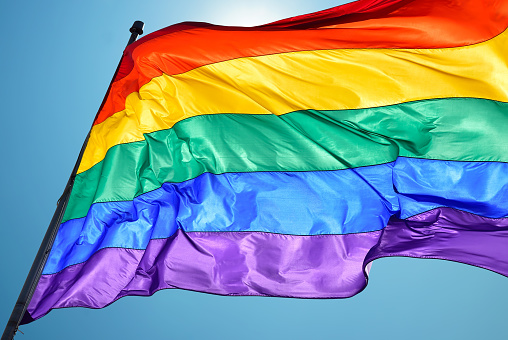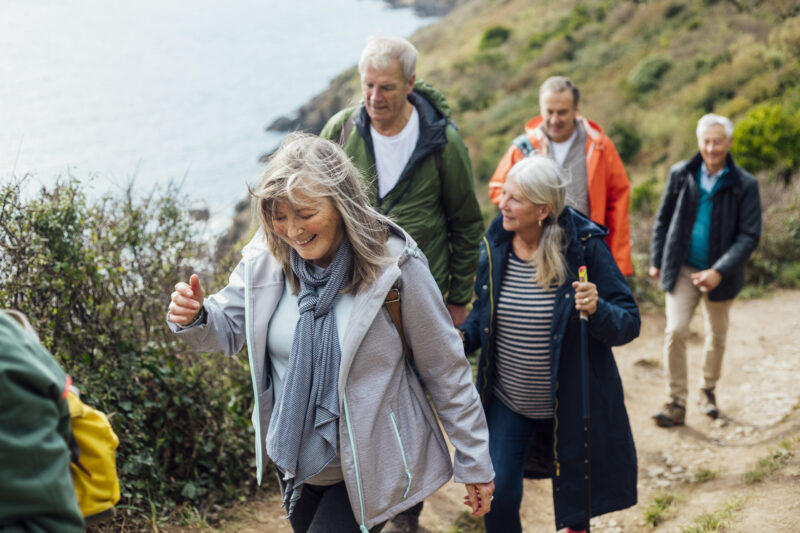Getting older is challenging for all of us. But being lesbian, gay, bisexual, transgender, or queer (LGBTQ) can make those challenges even more complicated. With an estimated 1.5 million U.S. LGBTQ adults aged 65 and older—a figure expected to double by 2050—there is increasing attention to this demographic.
Of course, many aging issues are the same, regardless of sexual orientation or gender identity: figuring out who will take care of us, having close friends and enough money in retirement, and finding affordable housing if we need to move.
Pressures Unique to LGBTQ Older Adults
Serena Worthington, director of national field initiatives for SAGE, an advocacy organization for aging LGBTQ adults, believes, “the LGBT population may feel aging more acutely. They have faced decades of discrimination and been condemned from the pulpit,” she says.
Today, some older LGBTQ adults are worried that homophobic doctors, clinicians, in-home health care aides, or long-term care staff may provide inferior care, or that they will be mistreated—including being neglected, abused, or harassed. Others fear they will have to hide their sexual orientation or gender identity in order to be treated fairly.
In a 2018 AARP national survey of LGBTQ adults age 45 and older, nearly half of lesbian, gay, and bisexual respondents worried that they could be forced to hide their sexual orientation or gender identity in order to receive care, as did 70% of transgender people.
Most states have adopted employment anti-discrimination laws, but they don’t always cover LGBTQ workers. Only 22 states and the District of Columbia have employment laws that prohibit discrimination based on sexual orientation and gender identity; another six states offer protection for public service employees.
Discrimination in the workplace can mean that LGBTQ candidates don’t get the job, which may result—over the course of a career—in less money saved and smaller Social Security benefits.
Other Obstacles for LGBTQ Older Adults
Some aging LGBTQ adults may have fewer friends, family members, and potential caregivers. A number of older adults, particularly in this current age group, lost partners and friends in the AIDS epidemic of the early 1980s. Others may have a limited, if any, relationship with disapproving family members. LGBTQ adults with limited financial means living in an expensive urban area with a strong support system may find themselves forced to move to a less expensive suburban or rural area where they have no roots.
Look at these statistics:
- In the 2018 national AARP survey, three out of four LGBTQ adults age 45+ are concerned about having enough support from family and friends as they get older.
- Also according to the 2018 national AARP survey, gay men age 45+ were more likely to be single (57%) and live alone (46%) versus lesbians (39% single, 36% living alone).
- As stated in a May 2018 Boston Foundation special report, older LGBTQ adults were three to four times less likely to have children than their heterosexual counterparts.
- A Williams Institute survey reported that nearly 60% of older LGBTQ adults felt they lacked companionship and 50% reported feeling isolated from others.
Because so many aging LGBTQ adults don’t have kids, a partner or spouse, and live alone, their chances of loneliness increase. This can trigger mental health and physical problems.
Marsha Brown wonders what she will do if and when she can no longer take care of her Clarkston, Georgia, house. When she was younger, the 75-year-old dreamed of creating a lesbian retirement community. It never came to fruition.
Most of Brown’s lesbian friends are couples and “lately, there are more and more days where I don’t interact with other people. That’s a major concern, especially as I get older; socialization is so important to well-being,” Brown says.
New Options for LGBTQ Seniors
The good news is that the situation is improving for gay older adults. Many straight people are more accepting. Healthcare service providers have begun vying for LGBTQ business, requiring sensitivity and culture training for their employees.
In 2018, the first of its kind Trans Wellness Center, in Los Angeles, debuted for transgender people.
Experts say the biggest concern of aging LGBTQ adults is housing. So, in the last few years, LGBT-friendly affordable housing communities have been opening around the country. They’re providing a sense of belonging, not to mention a place to live. Some of the residents were previously homeless. (Federal anti-discrimination laws mean that heterosexuals can live there, too, and some do.)
Among the LGBTQ affordable housing projects are Triangle Square Apartments in Los Angeles and John C. Anderson Apartments in Philadelphia.
In New York City, SAGE is building Ingersoll Senior Residences, a 145-unit project in Brooklyn. Next on deck for SAGE is Crotona Park in the Bronx.
Across the country and just four blocks from Triangle Square will be the Los Angeles LGBT Center’s Anita May Rosenstein Campus. Opening in 2019, it will be the first LGBTQ intergenerational living community, with 99 units of mature market affordable housing, 100 beds for homeless youth, 25 units of supportive housing for young people, and a commercial kitchen to feed homeless adults and youth, as well as mature market and youth centers.
Amid wine country in Northern California is Fountaingrove Lodge—the opposite of affordable housing. It is a resort-like LGBTQ community offering independent and assisted living, skilled nursing, and memory care services.
Welcoming Community Centers and Healthcare Communities
LGBTQ community centers are growing at a fast pace, too, with more than 200 in the U.S. The Los Angeles LGBT Center offers 180 activities and services, ranging from medical and mental health, to support groups, to legal, housing, and employment help.
Tripp Mills, the Center’s deputy director of senior services, has seen a “significant increase in the numbers of seniors coming to the center for services that are LGBT specific. It speaks to an aging population and that the LGBT community is more ‘out’ than it has ever been before,” he says.
A huge fear for older LGBTQ adults, say experts and the mature market alike, is living in a traditional long-term care community and feeling judged.
In 2017, when a resident at the Hebrew Home at Riverdale, New York, told staff he thought he was the only gay person there and felt alone, the nursing home created the LGBT and Allies group. The twice monthly get-togethers includes both LGBTQ residents and straight residents who support them. Today’s older LGBTQ adults “grew up when being gay was illegal and even considered a mental illness,” says Liisa Murphy, co-leader of the support group. “While times have changed, they may not be sure people’s views have.” The “allies” are one way to make them feel like they fit in.
Along with an increasing focus on the needs of aging LGBTQ adults should come more creative initiatives, more understanding, more support, and more acceptance. This will, no doubt, allow older LGBTQ adults to keep their focus on aging well, rather than on issues related to their sexual orientation or gender identity.







Hi, Turning 65 in June this year; I do need better Dental insurance- I am on Amerihealth yet they will Only assist with 1 cleaning every 6 months 👎🏼I am an AARP member; I live in Concord, NH and would appreciate any advice Thank you
very interesting details you have mentioned , appreciate it for putting up.